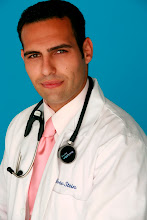When patients come to my office, I’ve found it is very important to take a very thorough health and family history.
I find patients frequently tell me important clues to the cause of their headaches. For example, if one of my patients indicates that she has had headaches, as long as she could remember and the family history includes her mother having headaches that were debilitating and an MRI revealed that part of her brain stem extended down into the upper part of the neck, this would prompt an MRI of the patient which could reveal a similar finding. Another example is a patient with headaches that occur only at the time of one week prior to menstruation. This may lead to the trial of several nutritional vitamin / herbal approaches aimed at reducing fluid retention or build up that frequently occurs pre-menses. Other causes have included traumas from car accidents, slips and falls, sports injuries, and other activity related causes. In these cases, examination may lead to a diagnosis of abnormal biomechanics in the cervical spine and chiropractic treatment addressing these findings may prove very satisfying. Other causes may include stress and/or psychological conditions that required co-management with mental health practitioners and/or their primary care physicians. The combined efforts of medication and chiropractic treatments are most satisfying for these patients.
In general, the cause of headaches are usually multi-factorial and therefore, the most effective treatment is a multi-dimensional approach in which chiropractic treatment methods are, in most cases, the most important contribution to the successful management of headaches. Chiropractic treatment approaches include spinal manipulation, mobilization, muscle release techniques such as trigger point therapy, longitudinal and /or transverse friction massage, massage therapy, manual and/or instrumental traction both at home and office, physical therapy modalities including ice/heat, electrical stimulation (several types), ultrasound, light/low level laser therapy, infrared, diet and nutritional counseling, and stress management. Co-management needed for some patients can be arranged through this office and may include primary care physicians, physical medicine and rehabilitation physicians, pain management, rheumatology, internal medicine, neurology, physical therapy, as well as acupuncture.
Most important is that you feel confident that if you, your family or friends require treatment for headaches, our office will provide you with a comprehensive approach most likely to bring about a very satisfying outcome or result.

No comments:
Post a Comment